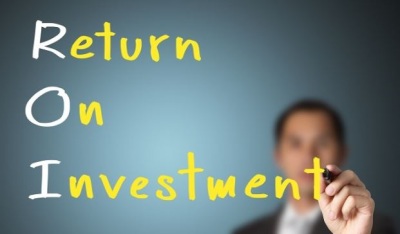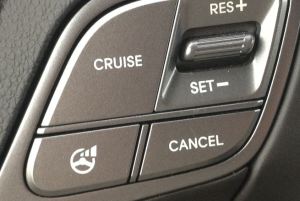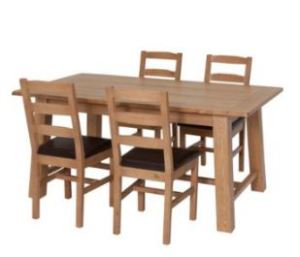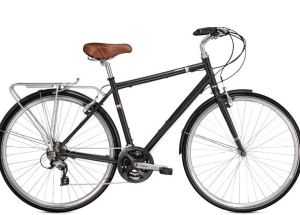
Calculating investment returns on everyday items
While recently discussing the costs and benefits of a company car scheme, Vawt from Early Retirement Ahead made an excellent point about having cruise control on the vehicle to help minimise the chance of receiving a speeding ticket. This effectively valued the addition of cruise control on the vehicle in the form of reducing future financial liability. While not a typical asset class; there are plenty of examples of businesses valuing investments which seek to limit or reduce future financial liability.
This got me thinking that perhaps there would be other ‘everyday items’ which could also be considered investments and how we could begin to calculate their investment return. The problem however is that many of these such items will be used to reduce future costs rather than producing a future income. Calculating such reductions isn’t going to be totally accurate; however the idea is still worth exploring and interesting to calculate.
Timescales
Almost all physical items will have a useable lifespan and so this will limit the timescale for each item. Similarly some items might become less effective towards the end of the useable life span and so this should be considered.
Purchase Cost
In order to keep calculates as accurately as possible; I have assumed each item has been purchased from new at an average market value. Obviously many items could be purchased during sales or 2nd hand, however this may skew the results and affect calculations. I know many financial advice sites regularly rely on people being able to obtain certain items at a discount however this is not always available or practical.
Returns
As previously mentioned; all returns are going to be estimated future expense reductions. I make no claim that this will be entirely accurate but reliant upon my best guess! Feel free to comment below for any differing values you might calculate yourself.

We may as well start with the suggestion that sparked the whole idea! Cruise Control is a pretty standard optional extra on most recent cars. The return is in the form of the potential for avoiding parking tickets. We could also include reduced fuel costs however there is some debate over whether this is accurate. Costs depend on the make and model of the car but are likely to be around the same ballpark figure.
Timescale: Estimate of 10 years for an average use vehicle
Cost: £200
Return: 2x £60 speeding ticket.
Return on Investment: -£80, -%40. Not a good investment but potentially worth it for the comfort factor.

Certainly not your typical investment asset, however your table is likely to be one of the most heavily used items in the house. Returns come in the form of reduced restaurant and entertainment costs as you choose to host events at home rather than going out. In the past month alone we have held 3 gatherings over our house which would otherwise have been at the local pub/restaurant.
Timescale: Again another long term item – 10 years
Cost: £400
Return: 2x £20pp meal cost. One hosted event every other month.
Return on Investment: £2000, +500%. An excellent investment assuming you continue to swap restaurant meals for home cooked.

The Personal Finance blogger’s favourite! And with good reason. A relatively low initial investment with multiple sources of return that are easy to calculate and appreciate. Returns come in the form of reduced fuel usages, no parking fees and reduced car maintenance costs.
Timescale: A decent bike should like at least 5 years. I’ve had my bike (soon to be replaced) for well over 10 years now.
Cost: £150
Return: 2x £5 parking per month. 2x £10 petrol per month. 1x £5 car repairs avoided per month.
Return on Investment: £1950, +1300%. A clear winner and fantastic investment. If you don’t own a bike, you need one. Now!
There are many other household items which deliver returns in this way. The danger however is assuming that all items will do so. If you rarely go to the cinema than attempting to justify a £500 flat screen TV through reduced film costs isn’t going to cut it. However it’s certainly still worthwhile having a think about which items could be counted as investments around the home.
Which items do you own that produce the best non-standard investment? Or have you bought anything expecting a return but actually ended up costing more?? Let us know in the comments below.

6 thoughts on “Calculating investment returns on everyday items”
Bialetti four cup expresso maker
I *think* they are about £25
It has four parts, three aluminium and one rubber ring, which needs replacing every few years from amazon or ebay
My Bialetti might well outlive me
I think it pays for itself after about 12 lattes…. so maybe a week
This is why sometimes it’s better to purchase quality items than a lower priced, poor quality items. A lot of kitchen items are like that – knives, frying pan, etc.
Going along with Tawcan’s kitchen items, whilst I didn’t buy it myself as it was a Christmas present last year, I’d say that my bread machine has been a good ‘investment’. A loaf of fresh wholemeal bread costs around 35p to make, compared to a minimum £1 – £1.50 for a decent loaf in the shops. And I know exactly what’s in the loaf, ie no nasty stuff!
Although I guess I haven’t factored in electricity costs for the machine so perhaps it costs a bit more than 35p!
I find this a really interesting subject!
If you haven’t done so yet check out Flannel Guy ROI who has done many in depth posts on the ROI of various products and non financial investments: http://www.flannelguyroi.com/
Some are very counter intuitive and run against conventional PF blog wisdom!
Re: Kitchen stuff, I have learnt my lesson the hard way here many times, but also have a few knives from the pound shop that will seemingly last forever (serrated type) so sometimes it’s worth a punt on the cheaper items to see whether they’ll last.
Re: Breadmaking, I think this has a much better ROI in the US because bread is unexplainably far more expensive over there. Maybe they have strong bakers Unions? Who knows!
One final point of pedantry:
“The return is in the form of the potential for avoiding parking tickets” ??? :)
If you can invent a device that will do this, you have a little gold mine on your hands there Guy, that is certain! :)
Nice post. I have read some of your blogs and love to read them. Investment is something that has to be done with safe planning. Keep sharing such post. Thank you.
I know I’m nearly 6 years late to this post, but I think you’ve under valued the cruise control. The impact of avoiding speeding tickets is not just the cost of the ticket itself, but the potential knock on effect on your car insurance!